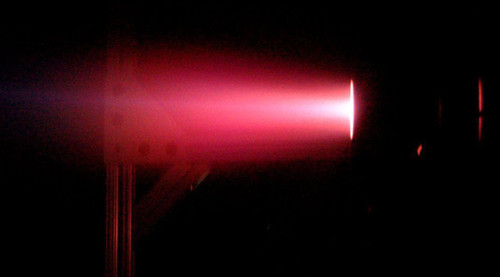WBMSAT Satellite Industry News Bits 03/30/2012
Friday, March 30th, 2012Intelsat 22, successfully launched on a Russian Proton rocket from Baikonur Cosmodrome in Kazakhstan on March 24, carries hosted payloads that will serve Australian and U.S. Forces in the Mideast.
[Space.com – 03/30/2012]
Telesat closes $2.5 billion debt refinancing agreement.
[Satellite Today – 03/30/2012]
LightSquared makes FCC filing claiming that a proposed ruling by the FCC staff that would effectively revoke LightSquared’s license to operate its network is entirely unsupported by the law, science, and FCC policy and precedent.
[VirtualPressOffice – 03/30/2012]
NASA starts new phase in effort to modernize the terrestrial segment of a decades-old space communications network.
[Information Week – 03/30/2012]
Russia selects Astrium to build two communications satellites, Express AM4R, and Express AM7.
[Space Daily – 03/30/2012]
Government of Bangladesh awards three-year, $10 million contract to U.S. consultancy Space Partnership International of Bethesda, MD, to manage its acquisition of a telecom satellite.
[Space News – 03/30/2012]
Russia launches missile detection satellite from Kazakhstan steppe on the last flight of a version of the Proton rocket that is to be retired after 45 years of service.
[Space Flight Now – 03/30/2012]
Defense Department has long-standing problem synchronizing development of terminals and ground control stations to satellite launch dates, resulting in satellites that are operating under capacity.
[National Defense Magazine – 03/30/2012]
Nigerian purchase Earth imagery resources from British observation satellites after finding images from its own recently launched satellite were irrelevant.
[Satellite Today – 03/29/2012]
KVH opens new mobile satellite antenna testing facility employing one-of-a-kind motion simulator and rigorous testing procedures.
[Market Watch – 03/29/2012]
Panasonic will ramp up satellite network coverage for its broadband connectivity service, striking new agreements with Intelsat and Australian Satellite Communications for additional capacity.
[Electronics Weekly Magazine – 03/29/2012]
Industry panel member advocates “Telehouse” in Africa to interconnect all cable and satellite operators so intra-Africa traffic can be switched and peered within the African continent, as part of a solution to barriers to cross-border communications between land-locked countries in Africa.
[SatNews – 03/29/2012]
Russia begins testing the use of nuclear fuel in space rocket boosters.
{SatNews – 03/29/2012]
International Space Station crew takes shelter in escape pods in case debris from satellite collision three years ago, detected as approaching by radar, should impact the Space Station.
[Strategy Page – 03/29/2012]
Increasing bandwidth requirements of Oil & Gas satcom market, coupled with increasing requirements of emerging Oil & Gas markets, keep the market lucrative.
[Market Watch – 03/29/2012]
Zeonbud of the Ukraine will launch its national DVB-T2 broadcast network using Harris Corporation’s Selenio media convergence platform.
[SatNews – 03/29/2012]
SpaceX announces the formation of a team of outside experts to help it create the world’s safest human spaceflight system.
[SatNews – 03/29/2012]
Telecoms Sans Frontieres provides Sat Phone connections and logistical support to facilitate repatriation of wounded Syrian civilians and supply of medicines to Syria’s besieged towns.
[SatNews – 03/28/2012]
Russian spacecraft controllers intentionally plunge Express-AM4 communications satellite that failed to reach orbit into the ocean, prompting a company interested in salvaging the satellite to call it “needless destruction.”
[MSNBC – 03/28/2012]
Orbital Sciences congratulates NASA on successful launch of five sounding rockets in less than seven minutes for the Anomalous Transport Rocket Experiment.
[SatNews – 03/28/2012]
TeleComnmunication Systems to host SwiftLink User Forum April 10-12 in Tampa, FL, bringing together thought leaders to share knowledge and best practices related to highly secure managed satellite and deployable communication initiatives.
[Market Watch – 03/28/2012]
Thai Airways will implement WiFi on their Airbus fleet.
[SatNews – 03/28/2012]
Thrane & Thrane’s AVIATOR 200 SwiftBroadband solution receives Supplemental Type Certificate for installation with in-flight Wi-Fi aboard Pilatus PC-12/45, PC-12/47, and PC-12/47E aircraft.
[SatNews – 03/28/2012]
Researchers create pictures showing how solar storms compress the Earth’s magnetic field; findings could help improve communications satellite design.
[CNET – 03/28/2012]
With Hughes Europe expanding availability of satellite broadband solutions through network of service provider partnerships, Hanover-based ABmann Technology GmbH takes advantage of this tailored approach.
[Channel EMEA – 03/28/2012]
Arab Spring has another consequence, as satellite jamming becomes serious enough to threaten the satellite operators’ business, typifying an increasing problem in the Middle East and North Africa.
[ars technica – 03/28/2012]
Communications via the ESA’s Artemis communications satellite helps ensure safe arrival of Europe’s Automated Transfer Vehicle at the International Space Station with vital supplies.
[SatNews – 03/27/2012]
Next-generation DOD space systems alone will not satisfy projected bandwidth needs – commercial satcom remains vital to military.
[Defense Systems – 03/27/2012]
SES and satellite continue growth path in Europe, with satellite becoming the leading TV infrastructure, and ASTRA serving 142 million TV homes.
[Web Wire – 03/27/2012]
Africell brings Thuraya satellite services to Sierra Leone.
[Awareness Times – 03/27/2012]
Taiwan’s Department of Industrial Technology kicks off “2012 Prototyping Topic of Galileo Pro” competition, focusing on development of satellite & vehicle-carried IT and Communications.
[Market Watch – 03/26/2012]
United Launch Alliance to launch classified satellite from Vandenberg AFB for NRO.
[Satellite Today – 03/26/2012]
International Security Expert argues that U.S. pursuit of a unilateral space policy instead of internationally co-operating is dangerous, and that there is a need for international rules.
[Huffington Post – 03/26/2012]
SES enters collaborative agreement with Samsung to make available TV-free satellite television sets in the sub-Saharan Africa region.
[Satellite Today – 03/26/2012]
Avanti Communications signs with Onyx Group Limited to provide Business Internet Continuity services within the U.K from its HYLAS 1 satellite.
[SatNews – 03/26/2012]
Skyband of Saudi Arabia expands with Hughes HX broadband satellite technology.
[Market Watch – 03/26/2012]
iDirect Government Technologies introduces airborne Evolution rack-mount router.
[Market Watch – 03/26/2012]
U.S. Navy’s recently launched MUOS satellite successfully reaches its orbital position. [Spaceflight Now – 03/26/2012]
Obama warns North Korea on its planned satellite launch.
[Sydney Morning Herald – 03/25/2012]
WBMSAT satellite communications consulting services













